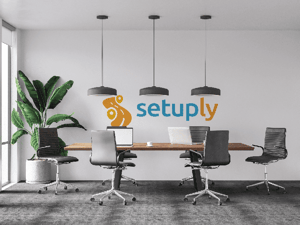
Enterprise Project Management Software From Setuply





Company History 2015 - Today
![Company-Logo-Mockup-Office]()
2015 - COMPANY START
Description. Lorem ipsum dolor sit amet, consetetur sadipscing elitr, sed diam nonumy eirmod tempor invidunt ut labore et2016 - FIRST MILESTONE
Description. Lorem ipsum dolor sit amet, consetetur sadipscing elitr, sed diam nonumy eirmod tempor invidunt ut labore et. Lorem ipsum dolor sit amet, consetetur sadipscing elitr, sed diam nonumy eirmod tempor invidunt ut labore et. Lorem ipsum dolor sit amet, consetetur sadipscing elitr, sed diam nonumy eirmod tempor invidunt ut labore et
2018 - SECOND MILESTONE
Description. Lorem ipsum dolor sit amet, consetetur sadipscing elitr, sed diam nonumy eirmod tempor invidunt ut labore et. Lorem ipsum dolor sit amet, consetetur sadipscing elitr, sed diam nonumy eirmod tempor invidunt ut labore et. Lorem ipsum dolor sit amet, consetetur sadipscing elitr, sed diam nonumy eirmod tempor invidunt ut labore et
![Company-Logo-Mockup-laptop-new]()
2022 - TODAY
Description. Lorem ipsum dolor sit amet, consetetur sadipscing elitr, sed diam nonumy eirmod tempor invidunt ut labore et
TABLE OF CONTENTS
In your quest to find an enterprise project management software that perfectly aligns with your team's dynamic requirements, look no further. Setuply offers key features essential for steering your projects toward success while maintaining workflow efficiency.
Project management tools, like those included in Setuply, are tailored to meet the specific needs of large organizations, offering centralized project management to support enterprise work environments. Indispensable features such as task management, collaborative workspaces, file sharing, and time tracking are crucial for boosting productivity and streamlining enterprise workflows.
Taking these variables into account, this resource acts as a guide to choosing the ideal enterprise project management software. Selecting the appropriate enterprise project management software involves evaluating factors like user-friendliness, features for project and campaign management, budget considerations, and the capacity to manage multiple complex projects together seamlessly.
Exploring the Landscape of Enterprise Project Management Tools

Project management tools are a guiding light in enterprise operations, providing critical support and structure to diverse teams. These tools act as virtual project managers, enhancing visibility into team activities, tracking progress, and offering comprehensive overviews into project portfolio management. Compared to generic project management tools, enterprise-focused solutions like Setuply effectively address the unique challenges of enterprise projects.
Setuply stands out as a popular choice among teams with its centralized approach to project management. By consolidating all project aspects into a cohesive workspace, Setuply combines flexibility and integration capabilities, making it an invaluable tool for enterprise level of endeavors.
Clear, structured project briefs and directives are pivotal for optimizing efficiency across projects. Setuply and similar tools mitigate ambiguity with structured frameworks that support efficient task management and promote cohesive collaboration.
Learn more about the Setuply solution.
Essential Features of a Robust Project Management Platform

A robust enterprise project management platform should resemble a well-equipped professional toolkit, offering features that serve as the building blocks for realizing the collective vision of enterprise teams.
Task Management and Organization
Tasks are crucial components of project planning and execution. The visual organization of tasks via intuitive dashboards enhances intuitiveness and effectiveness in task management.
Setuply acts as a centralized hub for tracking project statuses and managing tasks efficiently. The platform provides a comprehensive overview of projects akin to having a bird’s eye view of your project.
Collaborative Workspaces and File Sharing
Collaboration is key to project success in enterprise environments. Setuply offers an all-in-one collaborative workspace where team members across departments can seamlessly share data, updates, and feedback. The platform also fosters cross-team collaboration to realize project goals.
Time Tracking and Budget Monitoring
Time and budget management are critical for project success. Setuply’s time tracking capabilities ensure the effective management of resources. By tracking every minute spent on projects, Setuply provides valuable insights into team productivity and how to make the best use of your team capacity. These measures help teams stay on schedule and avoid scope creep that can lead to higher costs.
Automation and Workflow Customization
Replacing manual measures with automation capabilities frees up valuable time for teams to focus on high-value activities. With Setuply, you have the tools to automate project creation, task assignments, status updates, and communications with clients.
Customizable workflows within the platform can be tailored to the specific requirements of enterprise projects. While standardization drives consistency, enterprises can remain flexible to adapt to the needs of various projects.
Integration Capabilities
In today's interconnected business environment, organizations rely on a diverse array of software applications to manage various aspects of their operations. Setuply offers extensive integration capabilities, allowing seamless connectivity with these applications. These integrations further enhance project management needs, ensuring optimal performance.
The Impact of Project Management on Teams

Effective project management software fuels collaboration, improves productivity, and enables the realization of project goals. Here's a closer look at how enterprise project management tools like Setuply keep teams organized and synchronized.
Enhancing Team Collaboration and Communication
Setuply empowers teams to collaborate seamlessly, regardless of their location or role within the organization. Its ability to include clients and stakeholders in the collaboration process streamlines the feedback loop between internal teams and external partners. Whether it's sharing project updates, discussing deliverables, or resolving issues, Setuply ensures everyone is on the same page.
Visualizing Project Timelines and Progress
Setuply offers robust visual representations of project timelines and progress. These dynamic visualizations provide project teams with a clear and intuitive way to track tasks, milestones, and overall project status in real-time. By visualizing task dependencies and critical paths, project managers can efficiently monitor the project journey as well as identify any bottlenecks that could impact success.
Experience Setuply's power firsthand with a demo.
Enterprise Project Management Tools for Client Onboarding

In modern business, efficient client onboarding is key to establishing strong relationships and delivering exceptional service. Traditional methods often involve cumbersome paperwork, disjointed communication channels, and manual tracking systems, leading to delays and inefficiencies.
With the advent of enterprise project management software, businesses can revolutionize their client onboarding processes. While making it easier to manage multiple projects, enterprises can ensure a smoother, more meaningful journey for clients. The key, as we've discussed, is to select the best enterprise project management tool for the job. Below are some essential features to keep top of mind.
Centralized Communication
One of the primary advantages of enterprise project management software is its ability to centralize communication channels. Rather than relying on scattered email threads or disjointed phone calls, onboarding teams can lean on a unified platform to communicate with clients, share data and documents, and provide real-time updates. This not only enhances transparency but also fosters collaboration, allowing all stakeholders to stay informed and engaged throughout the onboarding process.
Efficient Task Management
Effective client onboarding involves a multitude of tasks, from gathering initial client data to securely migrating that data over to the new system. Enterprise project management software empowers teams to create comprehensive task lists, assign responsibilities, and set appropriate deadlines, ensuring that nothing falls through the cracks. By streamlining task management, enterprises can expedite the client onboarding timeline and let clients realize the value of solutions faster.
Customizable Workflows
Every client is unique, with distinct preferences, objectives, and workflows. Enterprise project management software offers the flexibility to customize workflows to suit the specific needs of each client. Whether it's adapting approval processes, adjusting reporting formats, or integrating with existing systems, enterprises can tailor their approach to ensure a personalized onboarding experience that exceeds client expectations.
Data-Driven Insights
Enterprise project management software provides valuable data-driven insights that can inform decision-making and drive continuous improvement. By tracking key metrics such as onboarding timespans, staff satisfaction, and client feedback, businesses can identify areas for optimization and refine their onboarding processes over time to drive even better results.
Manage Projects in a More Effective Way

Enterprise project management software has a tangible impact on team performance and project outcomes. By streamlining processes and fostering collaboration, enterprise project management software like Setuply facilitates successful project execution and boosts overall efficiency.
Think of Setuply as a conductor guiding the orchestra of diverse teams, streamlining workflows, setting clear directives, and facilitating seamless transitions. It has all the features and functionality enterprises need to earn that standing ovation at the end of a successful project, both from their team and clients.
Frequently Asked Project Management Questions (FAQs)
These frequently asked questions are designed to provide a deeper understanding of the multifaceted world of project management.
- Forecast issues
- Prevent bottlenecks
- Make strategic, data-driven decisions
- Enhance flexibility and adaptability to shifting market conditions
- Allow for scaling of project-based workers as needed
Project management techniques act as the glue that binds a team together. Efficient project management processes simplify collaboration, increase transparency, and guarantee accountability across teams and departments. Proper planning in project management leads to aligned stakeholders and a clear understanding of roles that ultimately reduces misunderstandings and miscommunications.
Maintaining project transparency can motivate teams by providing a clear understanding of project objectives and current status. The use of project collaboration tools can also help manage complex projects more effectively by facilitating the sharing of updates, files, and other critical information.
Effective project management handles changing project scopes or objectives with finesse. It involves:
- Planning with adaptability in mind, allowing for changes
- Ensuring projects remain aligned with strategic goals despite unexpected shifts
- Developing a structured change control process to streamline requests, delegate tasks, and maintain project scope oversight
To manage scope changes effectively, a project must have:
- A clear initial scope definition
- A formal process to define, evaluate, and approve changes
- Effective communication to the project team regarding scope changes
This is critical to ensure team members understand the reasons for changes and can adapt their work accordingly.
Innovation in project management is akin to a compass in an explorer’s hand, guiding organizations toward uncharted territories of efficiency and productivity. It involves applying new ideas and strategies to solve complex organizational problems and capitalize on opportunities for improvement.
Innovative practices significantly increase efficiency and productivity by leveraging novel approaches and building upon established technologies. Advanced technologies and innovative tools are transforming the dynamics of project management, leading to enhanced performance and satisfaction.
In the rapidly evolving world of project management, continuous learning and development is not just important, it’s essential. It enables project professionals to:
- Adapt to new methodologies, technologies, and best practices
- Enhance problem-solving skills
- Address unforeseen project challenges with creativity and confidence
Ongoing learning is crucial for staying ahead in the field of project management, and the Project Management Institute plays a key role in providing resources for professional development.
Continuous professional development equips project managers with the resilience to navigate unexpected challenges and pivot when needed. Engaging in continuous learning also supports career advancement, providing the knowledge and skills necessary for project management professionals to progress in the field.
Risks are an inevitable part of any project, and project management is all about identifying these risks and mitigating them. Some common risks include scope creep, budget overruns, and resource constraints. These risks can be mitigated through proper planning, continuous monitoring, and implementing risk management strategies.
A clear initial scope definition and a formal process to evaluate and approve changes can help manage scope creep. Budget overruns can be prevented with realistic budgeting and accounting for all expenses in the planning phase. Resource constraints can be managed by ensuring sufficient resources are allocated for the project’s successful completion.
Project management is a key contributor to an organization's strategic planning. It verifies that every initiative supports the broader strategic objectives of the organization. Project management also supports the alignment and coordination of an organization’s objectives and strategies across various departments, ensuring a unified pursuit of goals.
Project managers also apply their skills in resource allocation to prioritize initiatives that are in line with strategic goals, optimizing the use of budget, time, and manpower. By implementing mechanisms to track progress and maintain accountability, project management fosters a culture of responsibility and transparency.
Different project management approaches are designed to suit different project sizes and complexities, much like different tools are designed to perform different tasks. Some methodologies are better suited for projects with clearly defined steps and minimal changes. Other methodologies are built to handle projects that undergo frequent changes and require high flexibility.
The Waterfall methodology, for example, is often used for projects where changes are unlikely or costly, making it effective for industries like construction and manufacturing. Meanwhile, Agile project management offers an iterative, flexible approach that suits industries like software development that require adaptability and fast-paced work.
To learn more about Setuply, visit our Knowledge Hub


